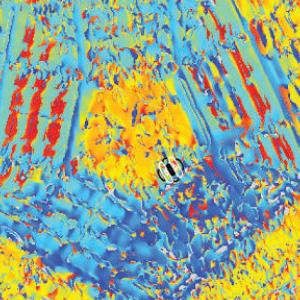luminance L = Lmin + (Lmax-Lmin) [( p – black ) / (white – black) ] ^gamma — Eq 1
where L = measured luminance, p = pixel-value, Lmin = luminance measured when the pixel value is set to black, ie 0, and Lmax = luminance measured when the pixel value is set to white, ie 255. (I have tried to be general, rather than assuming white=255, since one day I would like to get a graphics card with more levels). gamma is the exponent describing how fast the luminance rises as a function of pixel-value — hence the term gamma function. I’ll call Eq 1 a gamma function. I would like to make gamma = 1 (linearity).
Why gamma-correct
Obviously accurate gamma correction is massively important if you are trying to probe subtle contrast non-linearities in human vision. For my purposes, it isn’t totally critical, as my stimuli at the moment are typically random-dot patterns which just consist of black and white dots on a grey background. Potentially, it could affect the anti-aliasing which I use to mimic sub-pixel displacements. Suppose I have a white dot (255) on a black background (0); I I can mimic shifting that dot one quarter of a pixel to the left by painting all the pixels to the immediate left of the dot dark gray (64). If my system isn’t linearised, that 64 that I asked for may come out not 1/4 of the white level, but 1/8th, say. In other words my dot is actually shifted 1/8th of a pixel, not 1/4. So poor gamma correction can introduce disparity artefacts (admittedly at the sub-pixel level). On the other hand, in this example even a factor of 2 error in the requested luminance causes a disparity artefact of only 1/8 pixel, or 0.3 arcmin. It’s good that highly accurate linearity isn’t critical for me, because as you’ll see my projectors do not allow me to achieve it.



















